This index offers an overview of the major ‘families’ of works produced by Marcelle Cahn, along the lines of the different plastic and formal approaches that run through her practice.
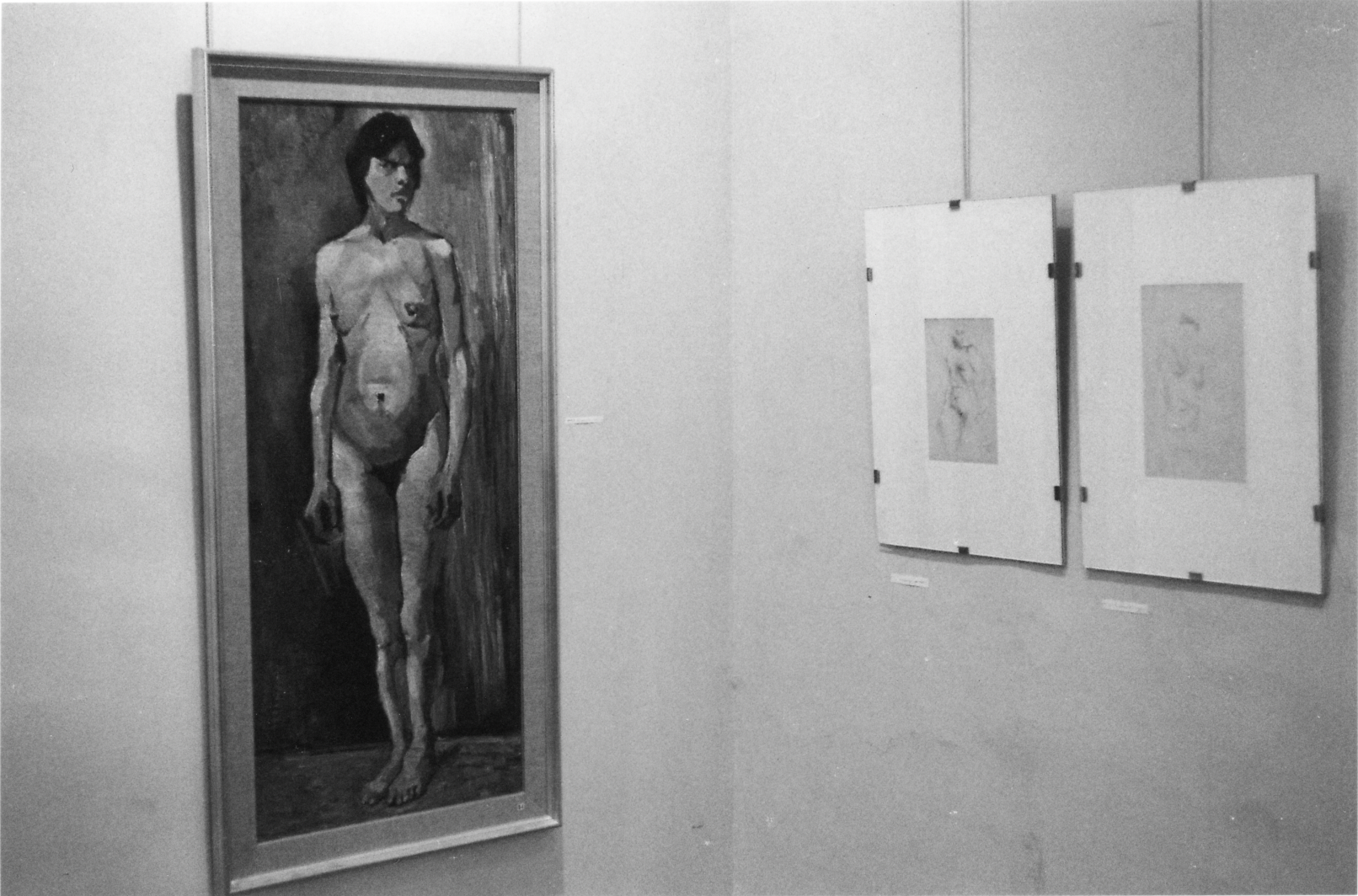
Oil on canvas, 133 x 58 cm,
Strasbourg, MAMCS
Exhibition view “Marcelle Cahn”, Musée des Beaux-Arts de Dijon, 1973. Photo: Serge Lemoine
Expressionism
From 1915 to 1918 Marcelle Cahn trained in Berlin, attending Eugen Spiro’s portraiture classes and Lovis Corinth’s studio where she studied nude works. She then discovered Impressionist and Expressionist works at the Der Sturm gallery run by Herwarth Walden. Whilst admitting to a more serene temperament, Marcelle Cahn admired the ‘exaltation of colour’ and ‘brutal force’ of which the Expressionists were capable. Her painting, although still figurative, experimented with this more vigorous stroke.
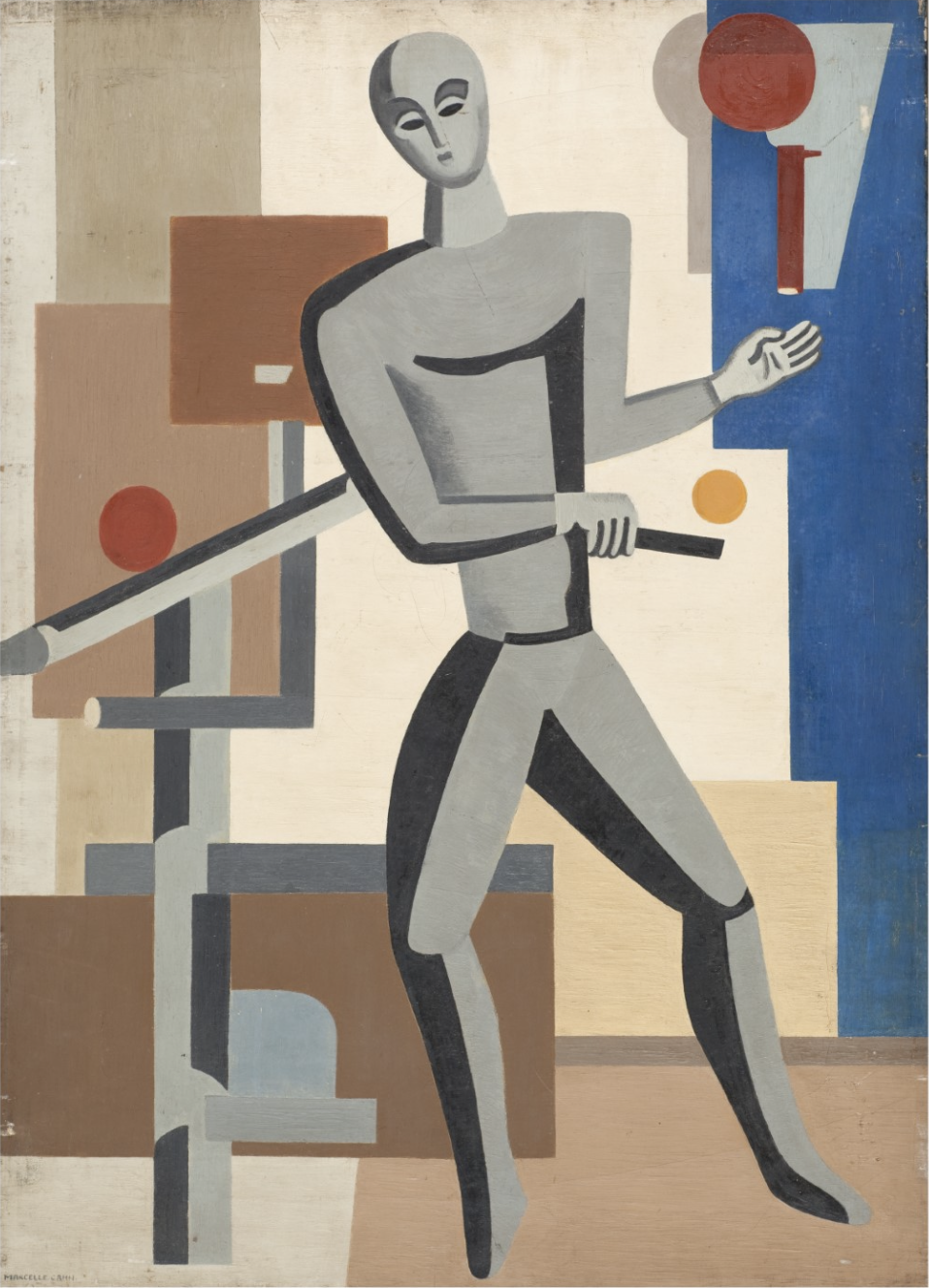
Oil on canvas, 80 x 58 cm,
Collection Mishkan Museum of Art, Ein Harod, Israël
Purism
Marcelle Cahn’s purist period developed between 1925 and 1930 and had a lasting effect on her future works. She attended the classes of Fernand Léger and Amédée Ozenfant at the Acamdémie Moderne, who introduced her to Purism: an alternative to Cubism. The Purist doctrine advocated for clear compositions with a geometric structure, linear contours and smooth, precise finishings. Cahn frequented various avant-garde circles and in 1929 joined the artist group Cercle et Carré, founded by Michel Seuphor and Joaquin Torres Garcia. She took part in landmark exhibitions such as L’art d’aujourd’hui (Paris, 1925) and the only Cercle et Carré exhibition (Paris, 1930). Her paintings from these purist years depict everyday subjects and still lives.
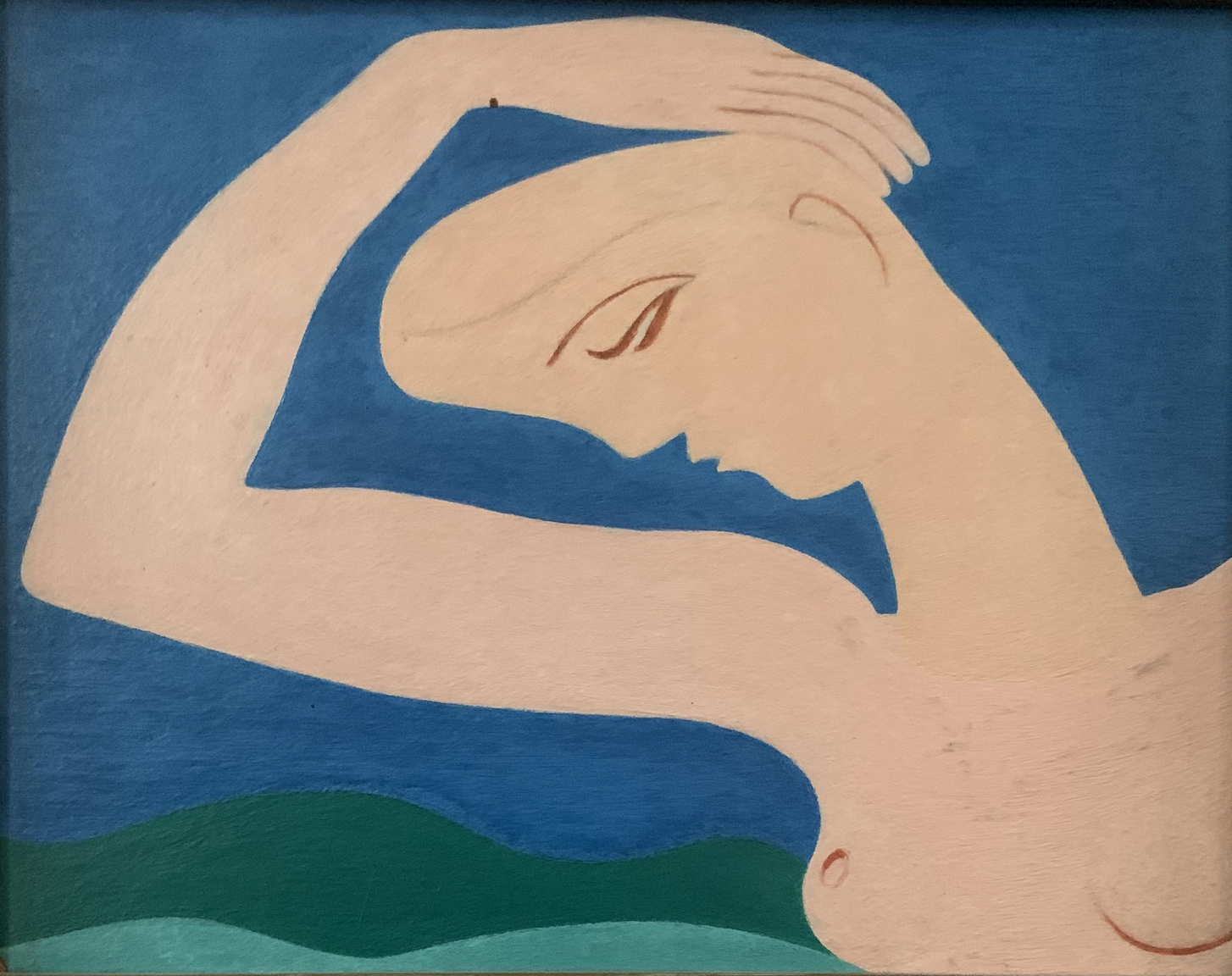
Oil on cardboard
18 x 23,3 cm,
Private Collection, Paris
Biomorphism
During the 1930s Marcelle Cahn’s pictorial output was scarce, as the artist spent a solitary decade in exile far from Paris and Strasbourg as the Second World War approached. In the few known paintings from this period and in her drawings, which were more abundant at the time, she focused on a hybrid figuration: half-purist, half-surrealist, with curved and elongated, sometimes interlocking anatomies. These biomorphic forms that tend towards organic abstraction, persist into the early 1950s, in brightly coloured canvases presented at the Salon des Réalités nouvelles (1949), exploring the interplay of curves and counter-curves, before a more geometric abstraction reappears in 1952.

Acrylic and mixed materials on wood, Courtesy Galerie Jocelyn Wolff
Photo: François Doury
Geometric abstraction
From 1953 onwards, Marcelle Cahn returned to geometric abstraction with her white-painted tableaux-reliefs on wood, isorel or plywood, on the surface of which the artist carved fine black lines, forming rigorous geometric grids. Described by Waldemar George as ‘the linear era’, this period reveals the artist’s extreme diligence, tracing these networks with the precision of industrial drawing. Delicately chromatic rectangles, squares and sometimes triangles inhabit these orthogonal and sometimes diagonal structures, some of whose compositions are reversible. Painted reliefs or spheres made of wood, isorel or balsa wood sometimes punctuate the surface of these Tableaux-Reliefs.

Ink, coloured pencil, pen on paper, 13,8 x 21,3 cm,
Courtesy Galerie Jocelyn Wolff
Lyrical and Informal
From 1956 onwards, Marcelle Cahn wrote around twenty short poetic texts in the form of handwritten notes, annotations in the margins of her drawings, or rare typescripts. She also created “drawing-poems”, in which delicate cross-hatchings, striations and coloured clouds become the staffs of scattered words. In these short poetic texts, we find the reoccurrence of musical, celestial and astral themes, as well as motifs of silence and solitude.
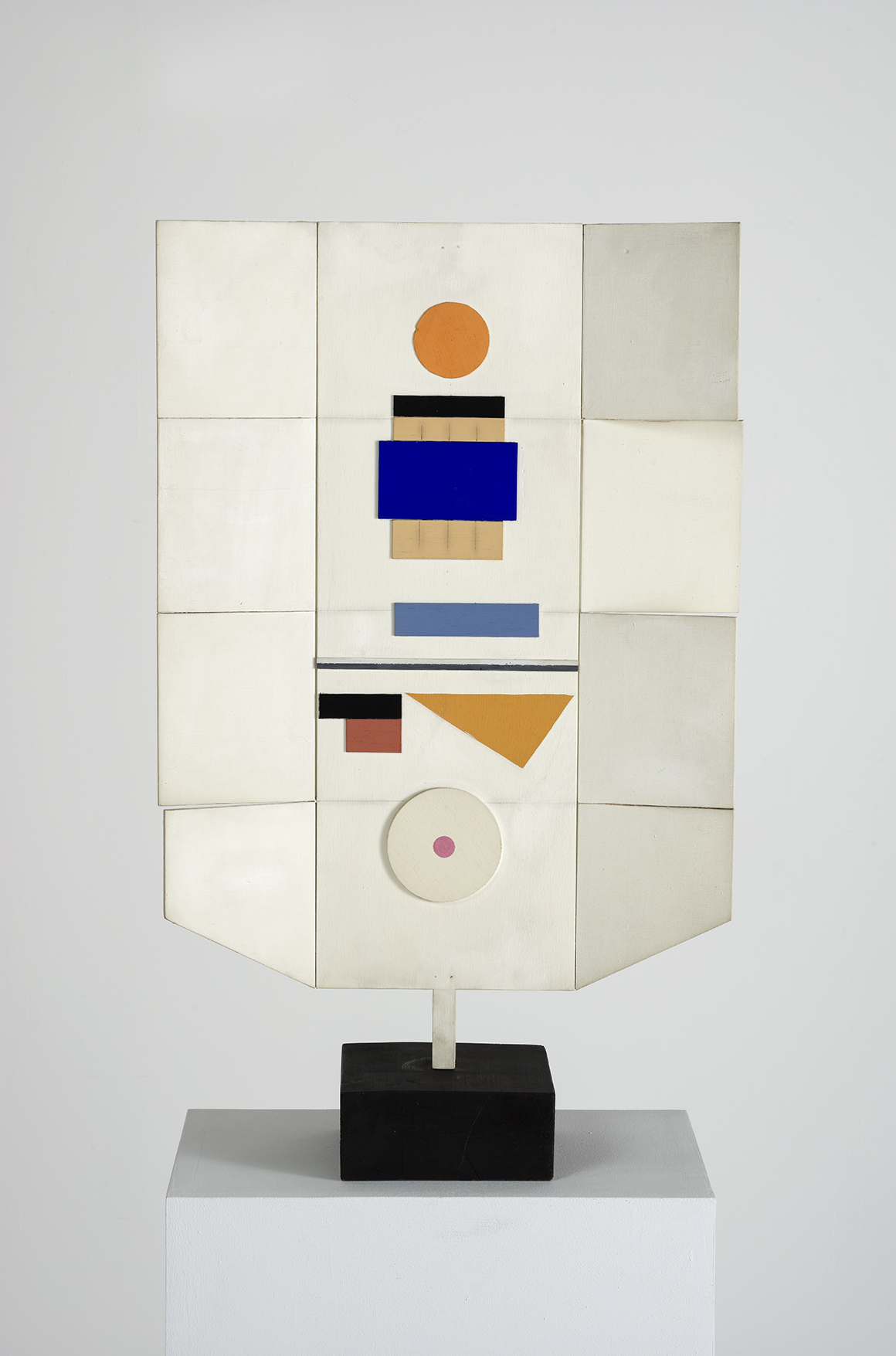
Oil on wood, 69 x 43 x 15,5 cm,
Private Collection
Spatial Sculptures
Marcelle Cahn produced her first Spatial work in 1961, inspired by Swiss artist Gottfried Honegger. Small cardboard medicine boxes laid flat and cut to size, were the inspiration for these white-painted wooden sculptures, featuring a fixed central panel bordered by movable side panels. Pastilles, rectangles, triangles: coloured geometric shapes animate the pristine surface of these ‘spaceships’. Their titles of the sculptures and their slender silhouettes, evoking the rockets and satellites of our attempt to traverse space, underway since the late 1950s.
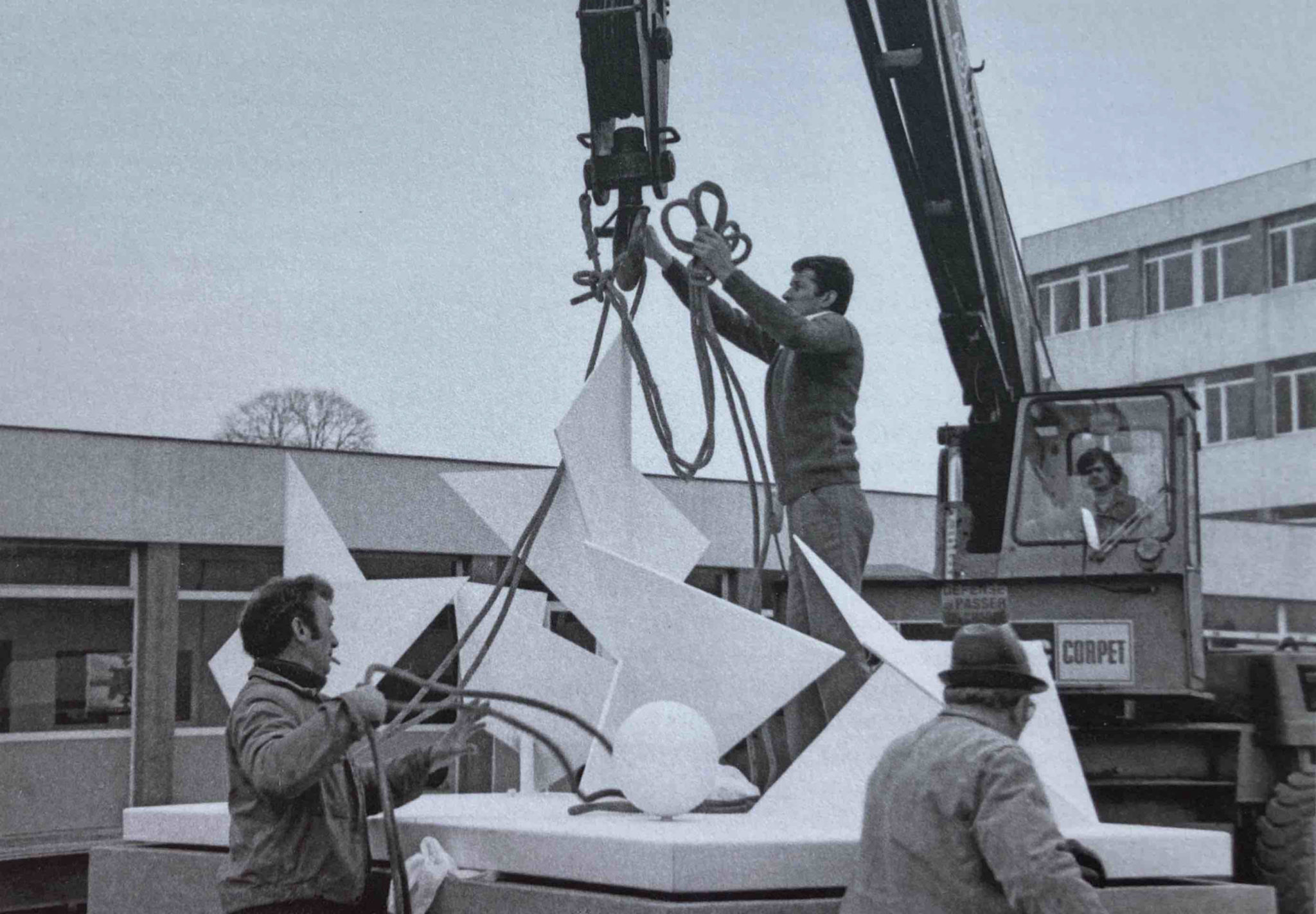
Metal, paint,
Dijon, Collège du Parc
Public Spaces
In 1976 Marcelle Cahn completed two sculptures intended for public spaces, commissioned as part of the artistic programme called 1%, directed by Serge Lemoine, the artistic advisor to the Burgundy region at the time. At the Paul Fort secondary school in Is-sur-Tille, Cahn created Spatial C, in polyester and painted metal. At the Collège du Parc in Dijon, she created L’Envol, also entitled Plans dans l’espace, a white-painted metal sphere. These two monumental sculptures reflect the evolution of Marcelle Cahn’s work, from plan to relief, and finally to volume.
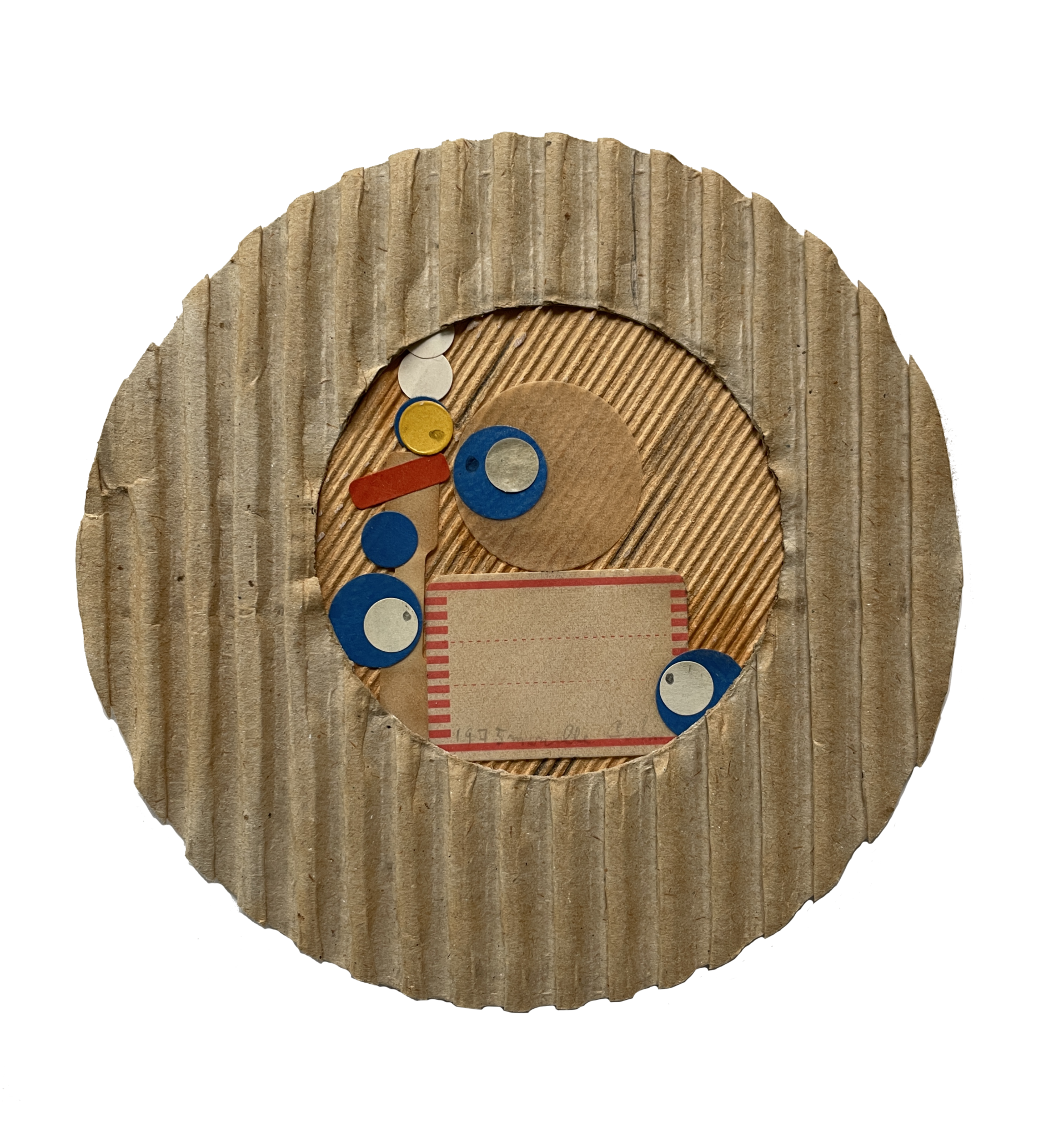
Collage on cardboard, 14,5 x 14,5 cm,
Courtesy Galerie Jocelyn Wolff
Collages
After a few Cubist collages in 1925, Marcelle Cahn returned to collage later in 1952. Her return to collage was a revelation for her, enabling her to ‘quickly express a certain sound that a painting cannot have, using different materials’. With reduced means, and compensating for her eye problems with the tactile dimension of collage, Cahn recycled everyday materials: stickers, eyelets and self-adhesive labels, as well as medicine boxes, envelopes and other packaging. Through a playful form, Cahn continued her purist, constructivist and abstract research in collage. She also produced photocollages and silkscreen collages.